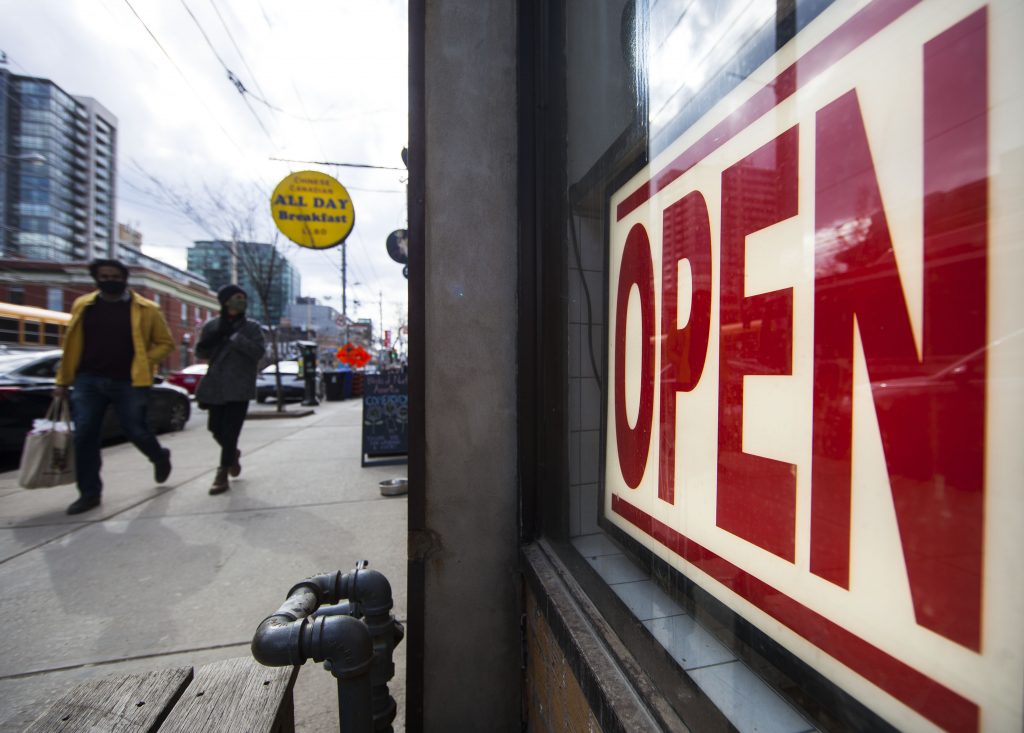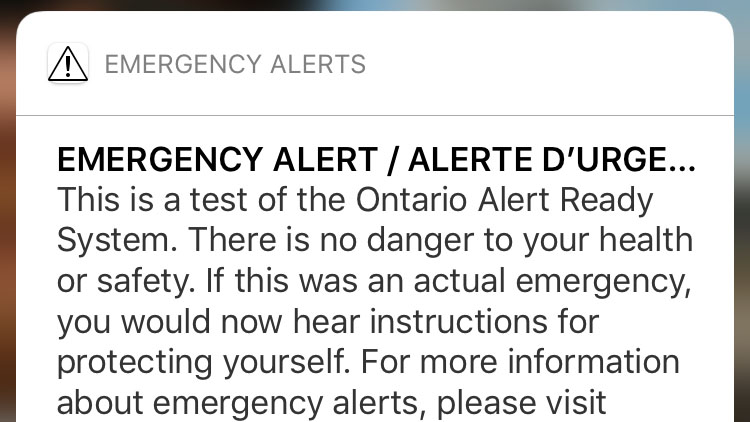Ontario enters Step 1 of reopening plan with limited retail shopping, patio dining

Posted June 11, 2021 12:00 am.
Ontario has entered the first step of its reopening plan, which will see a return to limited retail shopping and patio dining.
Step 1 of the Ford government’s reopening plan was tentatively slated for June 14 but with new daily coronavirus cases remaining below 1,000 and vaccinations ramping up, provincial officials agreed to kickstart the Roadmap to Reopen a few days early.
Just in time for the weekend, patio dining with a maximum of four patrons per table will now be allowed while indoor dining remains off-limits.
Essential retail stores, such as pharmacies and grocery stores, can now operate at 25 per cent capacity while discount and big box stores are no longer restricted to selling certain goods.
Limited non-essential retail shopping can resume at 15 per cent capacity. The reopening of non-essential retail is for street entrance only and stores located inside of malls without a street entrance will have to wait until Step 2 before they can open.
Outdoor organized public events and social gatherings of up to 10 people are permitted and this number may be exceeded if those you are gathering with are members of the same household.
Religious services, as well as weddings and funerals, can resume at 15 per cent capacity provided two metres of physical distancing can be observed.
Most outdoor recreation amenities, including splash pads and outdoor pools (by appointment only), are open while outdoor fitness classes of up to 10 participants are permitted, providing physical distancing of three metres can be maintained. Training for sports teams is permitted but may not include games or scrimmages and team sports are still not permitted.
Unfortunately, you will have to wait at least until next month to get that haircut or manicure. Personal care services such as barber shops, nail salons, tanning studios, and other cosmetic services are not permitted to operate in Step 1.
The province will remain in Step 1 for at least 21 days to assess impacts on key public health and health system indicators before deciding whether or not to move on to Step 2. Among those indicators, 70 per cent of adults will need to be vaccinated with one dose of the COVID-19 vaccine while 20 per cent of Ontarians will need to be fully vaccinated.
As of Thursday night, almost 63 per cent of Ontarians had received one dose of the vaccine while almost 11 per cent of people aged 12+ in the province are considered fully vaccinated.
Ontario businesses have been locked down since mid-April as the province navigated a third wave of the pandemic.
RELATED: National expert group concerned about provinces’ COVID-19 reopening plans
New modelling data released Thursday shows COVID-19 case counts are expected to decline over the next 10 days, however, the forecast depends heavily on more people being vaccinated and the impact of the Delta strain of the coronavirus.
The projections show if virus spread is low and we are vaccinating people at the rate of 142,000 per day, we will see under 500 cases a day until mid-August, with cases continuing to drop.
However, if virus spread is high with the same vaccination rate, cases could spike back up to 2,500 per day. With 180,000 vaccines per day, that number would be at around 1,500.
Dr. Adalsteinn Brown, co-chair of the Ontario COVID-19 Science Advisory Table, says vaccinations need to accelerate, particularly in so-called hot spots, to avoid a fourth wave. But he says the latest projections are far from a “doomsday scenario” of uncontrolled infections.
Ontario says it plans to accelerate second shots of COVID-19 vaccines for people in Delta variant hot spots. Starting Monday, residents in seven designated areas who had first inoculations on or before May 9 can now book an appointment for an earlier second shot.
Files from The Canadian Press were used in this report










